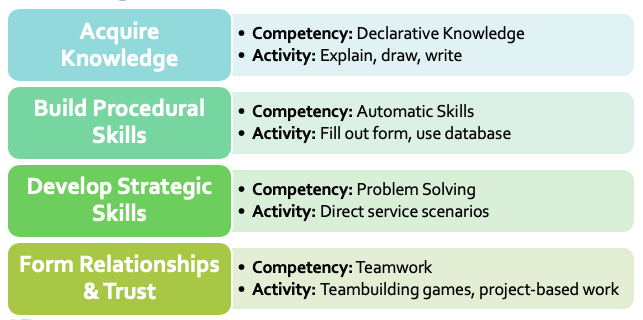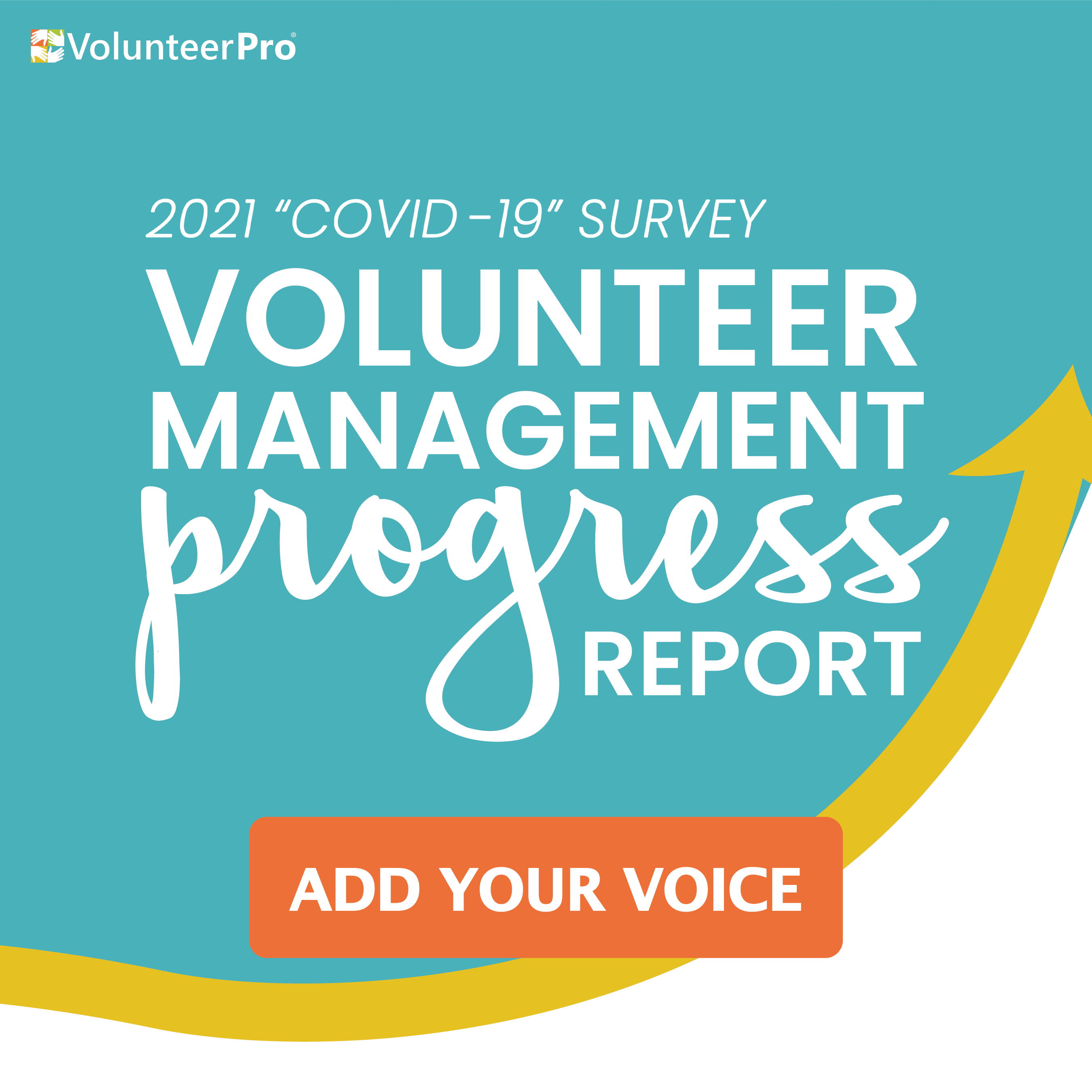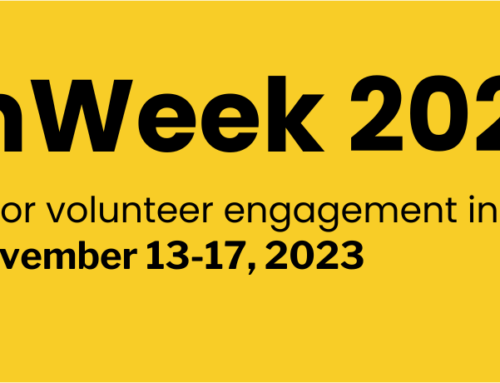Your Ultimate Guide to the Training of Volunteers
As COVID-19 cases continue to surge, you may be rethinking your plans for the training of volunteers.
If you’re frustrated, discouraged, or feeling stalled, I want to reassure you that now may actually be the perfect time to design and build some impactful volunteer training so that you can hit the ground running in 2021.
That is why I’ve put together this guide to help you navigate the daunting project of volunteer training. I want you to feel empowered to design some fantastic content that will keep your volunteers engaged in the learning.
Craft Amazing Volunteer Training with 5 Easy Steps
If you haven’t received training as an instructional designer, you may wonder how to best estimate the cost and decide on the content you should include in your volunteer training (or training for staff who supervise volunteers).
Developing new training – or renovating old workshops that don’t serve you anymore – is an intensive process. It takes countless hours to pinpoint what subject you want to train and develop all of the materials needed.
Even if you decide to design your training curriculum in house, rather than hire and external consultant, it takes hours to develop modules that will actually get the job done.
And what job is that? You might ask. It’s the job of changing or at least adjusting human behavior for the good of all. It’s a tall order that takes strategy, solid, planning, and skill.
In this guide we’ll walk you through the key steps and decisions that will set you up for success and ensure your investment of time and resources isn’t wasted.
Whether you plan to develop training for volunteers or leaders of volunteers, this guide will help.
Step One: Assess Whether Training is the Answer
Although training is often the first choice for addressing current or potential performance problems or barriers to success, it is not always the proper intervention or strategy. In fact, there are instances where training will not make any impact at all in a desired result.
Training is not a panacea. Therefore, it makes sense to clearly assess whether training is really the answer to a management problem.
To ensure you are actually solving the real problem, and not wasting your time, take time to define which of your volunteers’ learning or performance gaps you are trying to address before you come up with any solutions.
When it comes to volunteers or paid staff, there are several gaps you may need to address. They include:
-
- Knowledge Gaps – Not having enough of the right information to make decisions
- Skills Gaps – Not being able to do something (or do it well enough)
- Motivation or Attitude Gaps – When knowledge and skills may be present, but the learner still isn’t successful due to their own motivation
- Environment Gaps – When there is something blocking performance – (e.g., sufficient time, support, tools, etc.)
- Communication Gaps – Instructions aren’t clear or are contradictory
Knowledge and skills gaps can easily be addressed by training. However, motivation issues, flaws in the work environment, or communication breakdowns can rarely be solved with a workshop.
For example, common learning gaps for brand new volunteers include:
-
- How to explain the organization’s mission and services succinctly and accurately to the public
- How to fill out and submit the required paperwork completely and on time
- How to conduct work safely and what to do in case of an emergency
- How we do things around here
However, motivating a volunteer to follow through on their commitments would likely not be solved by a workshop, unless it was infused with team-building and inspiration.
Furthermore, if the volunteer or employee is not the right fit in the first place, no amount of training will overcome that fact.
So, when you decide that training might be the answer, pause to pinpoint which specific deficiencies you are trying to address. If you don’t, all of your hard work may be in vain.
Step Two: Pinpoint the Goals for Your Volunteer Training
Learning objectives are the critical foundation of any training course or workshop. They help you focus your course content on “need to know” information and leave behind unnecessary content that doesn’t help you (or your learner) meet clear, focused goals.
Learning objectives should be action-based, meaning 1) they are a reasonable task that the volunteer is expected to perform on a regular basis, and 2) they can be observed.
A learning goal is not helpful if it does not stand for a behavior-based skill.
One simple way to pinpoint learning objectives is to brainstorm answers to the following three questions; at the end of the training …
-
- what will your learners be able to do?
- what learning (knowledge or skill) gap(s) will be filled?
- what behavior change will be brought about?
To further flush out your goals, consider the following four levels of competency you need to develop in your volunteer or employee training programs. Each competency below also includes examples of training activities that support each competency:
Once you have your preliminary list, begin to refine it down to a final list. The total number of training goals you identify depends on the length and complexity of the material to be taught.
As a general rule, you should aim for no more than three learning objectives for every one hour of instruction.
Step Three: Identify Your Key Project Constraints
Good instructional design is as much about what you include as it is about what you leave out. It is also an exercise in compromise.
There are never enough resources or enough time to train on everything. So, you have to make choices.
When it comes to volunteer training development, there are four main constraints you must manage:
-
- Limits on Training Development Time
- Limits on Learner Capability and Availability
- Limits on Available Technology & Software
- Limits on Budget (including the equivalent value of staff time)
While instructional development time varies according to the number of learning goals and the level of mixed media that needs to be developed, there is no doubt it will take longer if done in house.
Agency employees often have a raft of other competing duties and responsibilities, which impact how much focused time they can devote to this kind of extensive project. This will, in turn, affect how quickly you can have your program up and running.
The current hard realities in these areas will most often impact the content and scope of your training, as well as how it will be delivered.
This analysis, and your steps moving forward, often require consideration of challenging trade-offs and creative solutions. But, if you make the hard decisions now, you’ll be better suited to move forward in a focused and efficient way.
If your project is expansive or complex, at this point hiring a consultant with solid expertise in learning design and development can help you identify a full range of creative options that might be available.
They can also help you develop a realistic scope of work that also works within your project budget.
Step Four: Select Training Delivery Methods
Once you have made some of the harder decisions around your volunteer training, you can move on to the fun stuff.
Will your training be presented online or on land? Or will it form a mix of both? With today’s advanced, yet affordable learning platforms, there are many practical reasons to take your training online.
Online training can help you …
-
- Keep everyone safe and healthy during a pandemic
- Reduce travel costs and reimbursements
- Realize economies of scale
- End long volunteer wait times
- Reduce time away from home or out of office
- Engage and support volunteers from anywhere in the world
- Increase speed and flexibility of instructional design
- Improve the consistency of training content and delivery
- Provide “just in time” information and skill building
- Minimize duplication of effort
- Reduce your agency’s carbon footprint
Volunteer Training Delivery Methods
It will take careful consideration to decide which methods and materials you need. A professional instructional designer can help you decide by supplying insights.
They can advise you on the ups and downs of each method and whether it might be proper for the experience levels of your learners, your organizational context, and your goals.
Some things to consider include …
Ultimate Goals for Training
What is the expected depth of competency needed
Skills or Knowledge
Is the goal to actually gain the ability to do something or simply have general knowledge about it?
Level of Preferred Interaction
Are you aiming for limited presentation or genuine interactivity?
Trainer Experience Level
What experience does the presenter have with technology, presentation, facilitation, etc.? Is this sufficient to deliver a quality experience for learners?
Budget and Project Timeline
Do you need the training right away, or can you wait for more extensive design to be completed? And what budget do you have that can be put toward design and ongoing technology costs?
Tech Capacity of Organization
What tools do you have on hand, and do you have the type of equipment and the level of internet connection needed to train online?
Tech Available to Learners
Do learners have access to reliable internet and devices needed, or can you help in some way?
Learner Tech Comfort
How experienced are your learners with the technology, and is the platform easy enough to learn and use?
Step Five: Decide Who Will Do the Work
At this point in the process, it’s a good time to decide whether you can afford to extend the expected development time or, alternately, whether you can find the budget to hire a dedicated professional to complete your project rapidly.
You have three major options when it comes to training design – do it yourself (or have another staffer do it), recruit a pro-bono volunteer, or hire an outside consultant. There are pros and cons to each choice.
Do It Yourself
If you decide to take on the project yourself, expect the development time to take longer than it would when working with a consultant. Also, if you don’t have extensive design experience, expect that you may need to pilot test and make updates to your work as it may miss the mark initially.
Also, be sure you have developed an evaluation tool (like the Training Feedback Form found at the bottom of this page) that will assess whether or not your training is working.
Simply putting together a set of presentation slides that detail your topic is not effective instructional design. So, be sure to invest your time wisely, or risk poor results.
Recruit a Pro-bono Volunteer
If you decide to go with a pro-bono or skilled volunteer, it’s a good idea to set up an agreement. So, it’s vital that you’ve already completed the first five sets detailed above. Volunteers will have little time to do those steps for you.
But, if you approach the project in a professional way, and you have an agreement in place, you’ll head off any misunderstandings before they crop up, and it’s more likely your project will be successful.
Hire a Consultant
Finally, if you decide to hire an outside consultant, make sure they have expertise in both volunteer management and training design. This will save you from having to explain common terminology or the differences between volunteers and employees.
In addition, most experienced consultants have a developmental framework they regularly use that has been refined over the years and results in a more efficient design process.
Training of Volunteers Online
If you lead volunteers, it’s likely you’ll be called upon to design and deliver online presentations as part of your volunteer training or orientations.
Webinars often get a bad rap, but they can be a very effective way to connect with busy and geographically dispersed volunteers. If you take time to design and present volunteer training webinars that are fun, educational, and highly interactive, your volunteers will not only learn from them, they’ll look forward to them.
That said, I’ve been taking part in and presenting webinars for about seven years now, and I’m sad to say I don’t see much improvement in the field. Often, even if the content is important, they barely hold my attention.
It’s time to up our webinar game. Volunteers will not learn if they are not engaged and inspired. Content presented is not necessarily content learned, even more so in online environments.
So, if you’re not capturing the imagination of your audience, you’re probably not getting through. More likely, they’re checking their email or making a sandwich and pretending to listen.
Don’t waste your time or theirs. Take a moment to design your online volunteer training so that it hits the spot.
7 Common Mistakes in Training of Volunteers Online
Here are some common mistakes folks make when presenting volunteer training via an online webinar.
Not identifying 3-5 Key Learning Objectives
Before you open up your PPT software, you need to identify what you are actually teaching. What it is you want people to be able to do at the end of the webinar? Translate this into actions that can be seen.
“Becoming aware” of your agency’s services is not an action. Being able to accurately describe three key services your organization provides is a doable goal.
Not Designing for Interaction…Real Interaction!!
Start by getting participants warmed up to interact by using a digital icebreaker like sharing an inspirational quote in the chat section or answering a poll question.
During the presentation, stop from time to time. Ask participants to respond to a question, share their experience, or explain how they might implement a suggested tactic. Acknowledge participation by calling out first names and reading their chat responses aloud. Try to use a variety of the interactive tools your webinar platform offers. Be as creative as you’d like.
Not Inspiring Emotion
Pay attention to the natural rise and fall of emotion during a webinar. Do you have a call to action at the end? Make sure you plug in an inspirational quote right before.
Are you presenting soulful or painful content that touches the heart? Be sure to allow time for participants to reflect on their responses. Is there particularly dense data or complex information you must present? Be sure to lighten up the content at once following. Webinars have an emotional rhythm. Design to deliberately keep it positive and momentum moving forward.
Not Testing the Technology Ahead of Time
I can’t tell you how many times a platform has worked fine for me one day, only to have the audio go out the next time I log in. Internet bandwidth and computer software are crazy things. Be sure they are functional and continue to work all the way up to your live presentation. Test both audio and visual a day or two before and the day of, an event.
Also, have a backup plan. What happens if the internet goes down from where you, or your guest speaker, is broadcasting? I always print out my slide notes so that if necessary, someone at another location can advance the slides while I present over the phone (and, yes, I’ve had to do that!).
Reading Your Speaker Notes
Reading a script just isn’t compelling. Your voice tends to devolve into a boring monotone. Practice, if you need to. Use a highlighter pen to single out important topics you need to cover. Write your notes in outline form. Do what it takes to keep you from reading. There may be quotes or statistics you need to refer to.
Learners are fine with an occasional verbatim read, but they quickly lose interest if the entire course is read aloud. Unless you are a paid voiceover actor, take another route. Imagine your audience as a friend with whom you are sharing a cup of coffee at the kitchen table. Find a friendly, conversational tone and stick with it.
Going Over the Time Allotted
Plan your talk so that you never go over the scheduled timeframe. When you run over time, your audience feels like their time isn’t respected. They also question your expertise and sometimes the credibility of your content. Don’t devalue yourself by not planning ahead.
Keep your slides to a manageable length. Estimate the time needed for each slide (I include the time for each slide in my speaker notes). Also, include the actual time of day at which you expect to reach several midpoints throughout your training. Include them in your notes. That way you’ll know whether you need to speed up or slow down far before the end of your talk.
Putting Too Much Text on Your Slides
A picture is worth a thousand words. Use photos and graphics to describe concepts. If you think you have too much text, but don’t want to lose it, cut and paste it into your speaker notes. Next, pare the text in your slides way, way, way (did I say way?) down.
The bulleted text should not be more than one line long. You can also use bold and differing font sizes to give your slide more depth and scan-ability.
Great Training Resource
Want to learn more about learning and instructional design? Check out this fantastic book, packed with research-based recommendations: Ruth Colvin Clark, “Evidence-Based Training Methods: A Guide for Training Professionals,” (American Society for Training and Development, 2010).
Share Your Creative Ideas!
What new volunteer training activities have you tried that you recommend? Share them in the comments below.
Now Let’s Get to Work!
As a final word, don’t let this guide to volunteer training development deter you from moving forward. If you make the tough decisions outlines in this guide before you start developing your materials, you’ll save enormous amounts of wasted time and energy in req-rites, stalled projects, and overall frustration.
And By the Way…
The 2021 Volunteer Management Progress Report Survey is open for business for a limited time, and we believe YOU have something important to say. This year, we are investigating the impact COVID-19 has had on your position as a leader of volunteers.
Every year we conduct a state-of-the-industry study on Volunteer Administration. In fact, it is the largest crowdsourcing of this type of data in the entire world. Over 5000 leaders of volunteers like you from all over the world have participated over the last four years. And, it’s that time again!
Please take the survey today, and help us (and you) better understand challenges and advocate for this underrated, incredible profession. vAnd please share the survey with your network.
Plus, everyone who completes the survey gets an exclusive invite to our free, sneak peek webinar on January 13, 2021.
The more people who participate, the better we’ll be able to continue serving you and nonprofit’s around the world.








